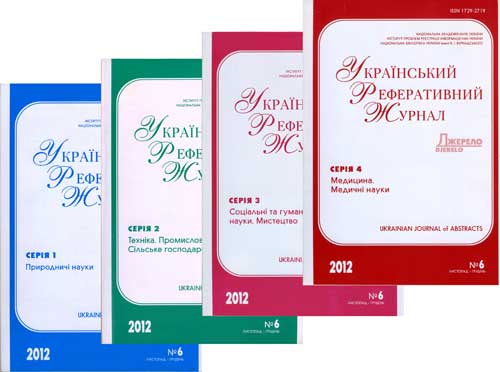РЕФЕРАТИВНА БАЗА ДАНИХ "УКРАЇНІКА НАУКОВА"
Abstract database «Ukrainica Scientific»
Бази даних
Реферативна база даних - результати пошуку
|
|
Пошуковий запит: (<.>ID=REF-0000143575<.>) | |||
|
Загальна кількість знайдених документів : 1 |
|||
Kazuhiko Mase Ion desorption from molecules condensed at low temperature: A study with electron-ion coincidence spectroscopy combined with synchrotron radiation / Kazuhiko Mase, Mitsuru Nagasono , Shin-ichiro Tanaka , Tetsuji Sekitani , Shin-ichi Nagaoka // Физика низ. температур. - 2003. - 29, № 3. - С. 321-341. - Библиогр.: 106 назв. - англ. This article reviews our recent work on photo-stimulated ion desorption (PSID) from molecules condensed at low temperature. We have used electron-ion coincidence (EICO) spectroscopy combined with synchrotron radiation. The history and present status of the EICO apparatus is described, as well as our recent investigations of condensed <$E roman {H sub 2 O}>, <$E roman NH sub 3>, <$E roman {CH sub 3 CN}>, and <$E roman {CF sub 3 CH sub 3}>. Auger electron photoion coincidence (AEPICO) spectra of condensed <$E roman {H sub 2 O}> at the O:1s potential surfacof the <$E (1s)~-~1(4a sub 1) sup 1> state. At the <$E 3p ~symbol M~ O:1s> resonance of condensed <$E roman {H sub 2 O}>, on the other hand, the <$E roman H sup +> yield was found to be decreased.The AEPICO spectra showed that the <$E roman H sup +> desorption was stimulated by spectator Auger transitions leading to <$E roman {(valence) sup -2} (3p) sup 1} states. The decrease in the <$E roman H sub +> yield was attributed to a reduction in the effective hole-hole Coulomb repulsion due to shielding by the <$E 3p> electron. Photoelectron photoion coincidence (PEPICO) spectra of condensed <$E roman {H sub 2 O}>. The <$E roman H sup +> desorption from condensed <$E roman {CH sub 3 CN}> was also investigated. In a study of condensed <$E roman {CF sub 3 CH sub 3}> using PEPICO spectroscopy, site-specific ion desorption was directly verified; that is, <$E roman H sup +> and <$E roman CH sub 3 sup +> desorption was predominant for the C:1s Індекс рубрикатора НБУВ: В368.3 + В369 Рубрики: Шифр НБУВ: Ж14063 Пошук видання у каталогах НБУВ | |||
| Національна бібліотека України імені В. І. Вернадського |
 |
| Відділ наукового формування національних реферативних ресурсів |
 |
| Інститут проблем реєстрації інформації НАН України |
Всі права захищені © Національна бібліотека України імені В. І. Вернадського